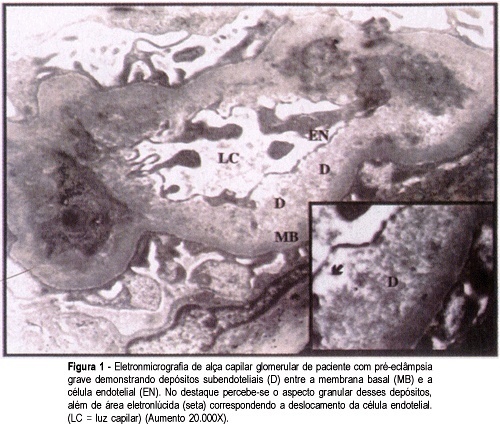Summary
Revista Brasileira de Ginecologia e Obstetrícia. 2004;26(3):185-192
DOI 10.1590/S0100-72032004000300003
PURPOSE: to investigate the glomerular alterations in patients with severe preeclampsia, as well as to evaluate the evolution of these lesions, relating them to the moment of the renal biopsy. METHODS: seventy-two pregnant women with hypertensive syndrome underwent renal biopsy in the puerperium. Appropriate samples for electron microscopic examination were obtained from 39 patients and grouped as follows: 25 with preeclampsia and 14 with superimposed preeclampsia. Biopsy findings were classified into: normal kidney, endothelial cell edema, mesangial expansion, mesangial interposition, subendothelial fibrinoid deposits, and podocyte fusion. RESULTS: the most frequent alterations found in both groups were subendothelial fibrinoid deposits and podocyte fusion. Endothelial edema was present in 84% of the preeclampsia patients and in 92.9% of the superimposed preeclampsia cases. There was no association between the degree of hypertension and the severity of endothelial edema. A tendency to mesangial interposition was observed in patients who had a biopsy after the seventh day after delivery. Podocyte fusion showed a significant association with 24-hour proteinuria. CONCLUSIONS: the above mentioned glomerular alterations represent a spectrum of complex and dynamic lesions that together represent the ultrastructural characteristics of preeclampsia which should no longer be diagnosed based only on the presence or absence of endothelial edema.
